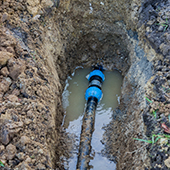Water Leak Detection
- Find the meter box. See our Water Meter Access page.
- Most meters are on the property line under a 10x15 inch concrete or metal lid.
- Remove the lid, taking care not to damage any wires. You will need a large screwdriver or small crowbar.
- Watch the meter for movement.
- If no one is using water and the meter moves, you could have a leak.
What to look for on your meter:
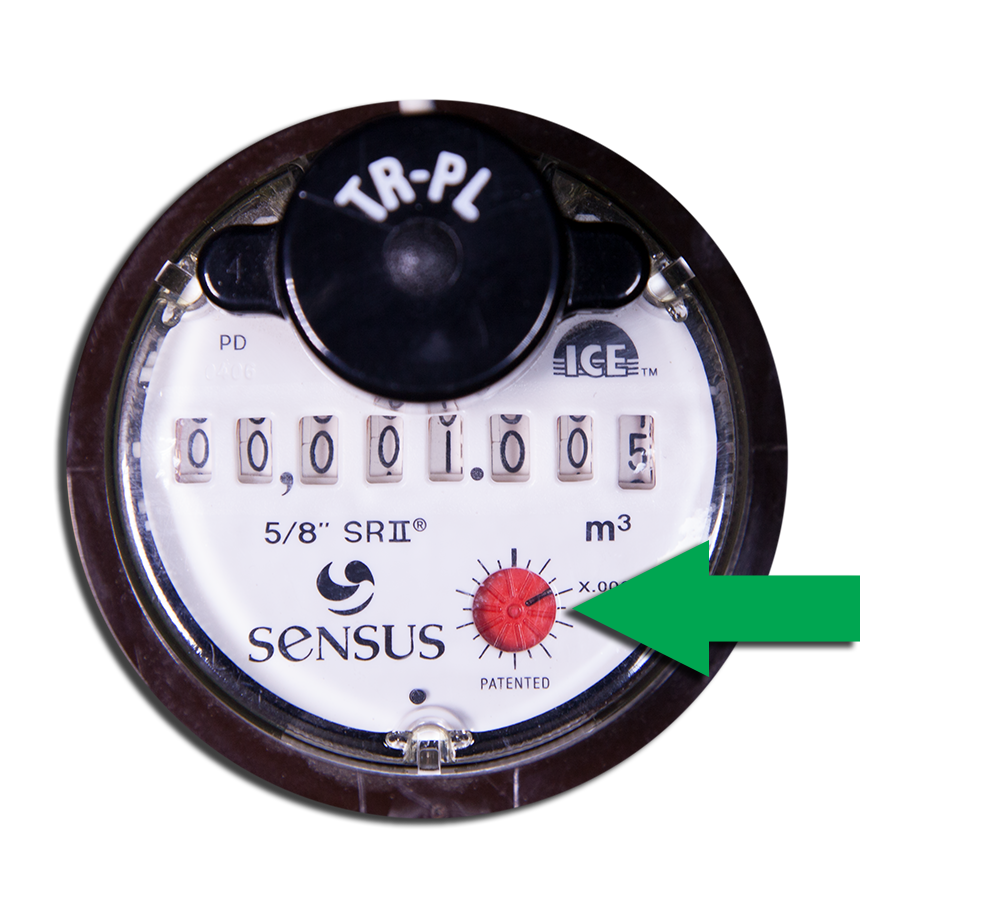 When water passes through this meter, the small circle on the meter face will move. This is a better indicator of a leak than watching the numbers turn.
When water passes through this meter, the small circle on the meter face will move. This is a better indicator of a leak than watching the numbers turn.
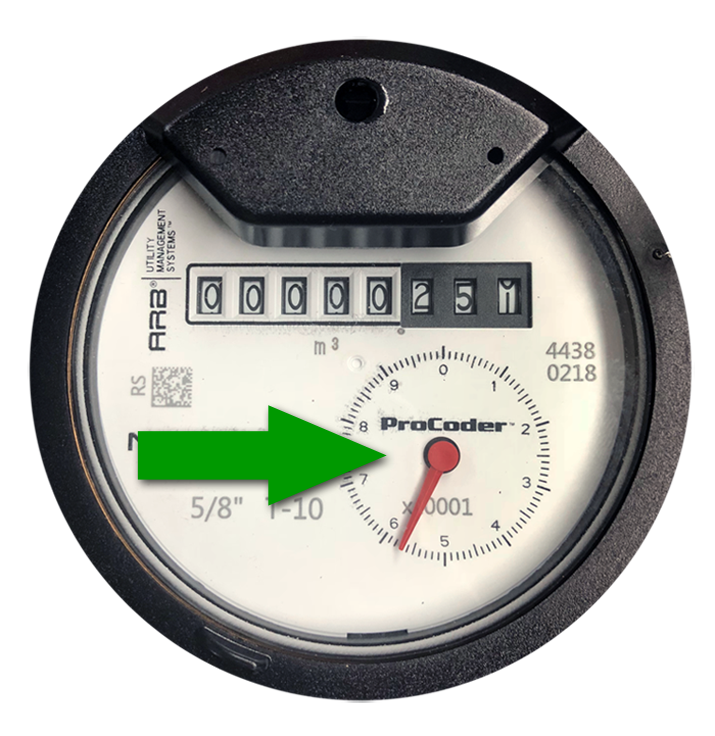
When water passes through this meter, the small red dial on the meter face will move. This is a better indicator of a leak than watching the numbers turn.
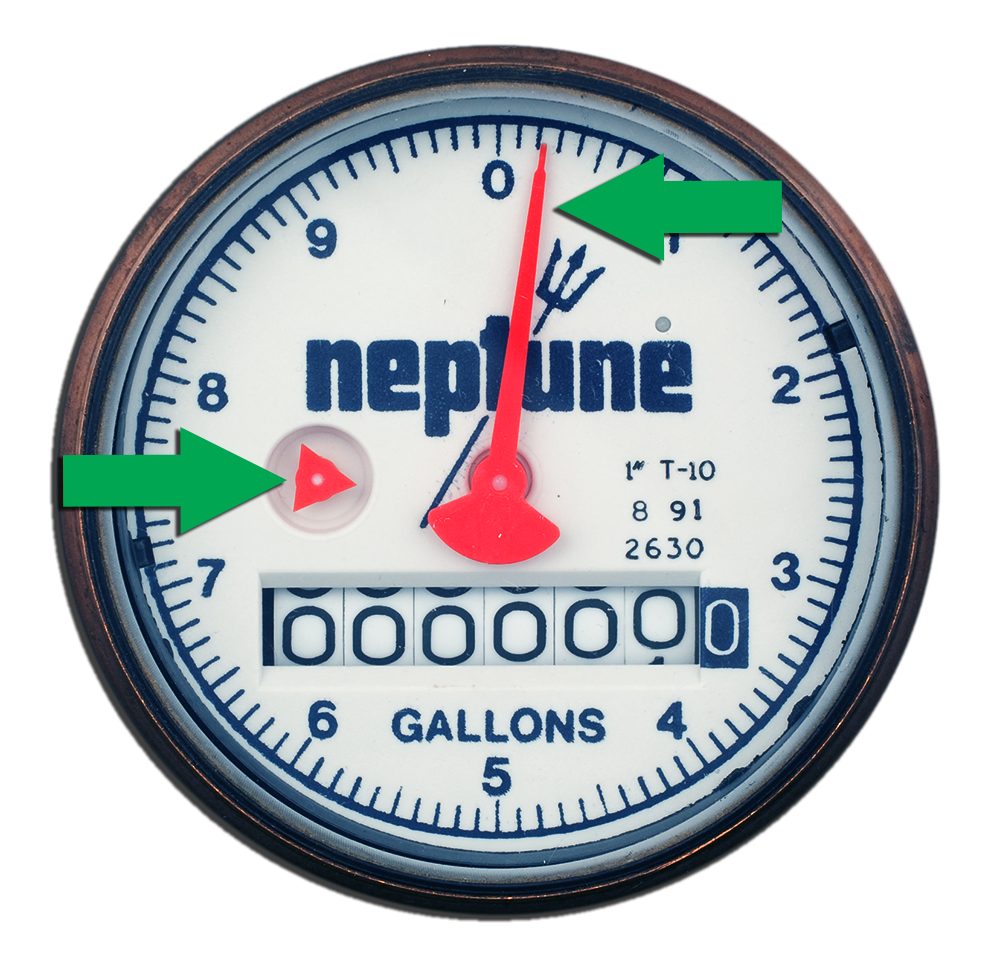
When water passes through this meter, the small triangle on the meter face will move. If the meter doesn’t have a small triangle, watch the large red dial marker. This is a better indicator of a leak than watching the numbers turn.
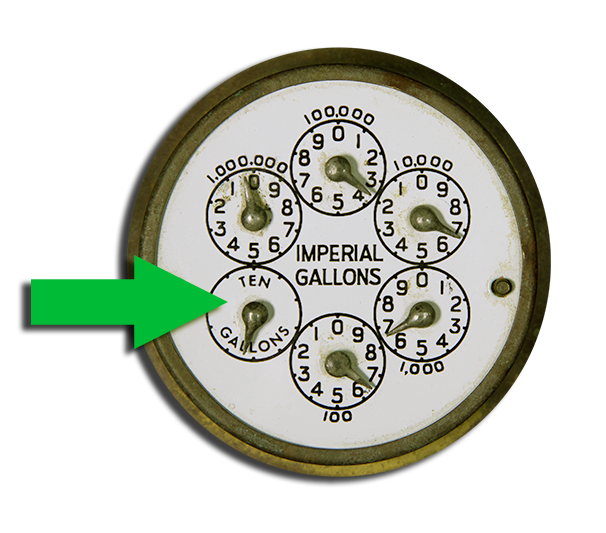
When water passes through this meter, the TEN GALLONS dial will turn. This is a better indicator of a leak than watching the other dials turn.
Common leak causes include:
- Toilet leaks or running toilets
- Dripping taps or faucets
- Sprinkler system leaks
- Leaks in the main supply line to the building
As a property owner, you are responsible for any leaks on your property. This includes where your main water line connects to our meter.
Water Leak Repair
This can be as simple as fixing a leaky toilet or as complicated as digging up your main supply line.
A leak in the main supply line between the meter and the residence or building(s) is the only leak that qualifies for a billing adjustment.
Our Water Leak Adjustments page has information on how to apply for a billing adjustment.


